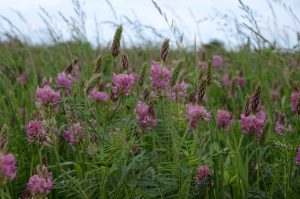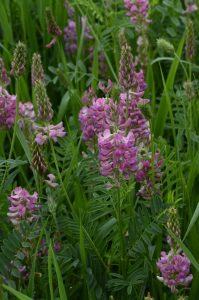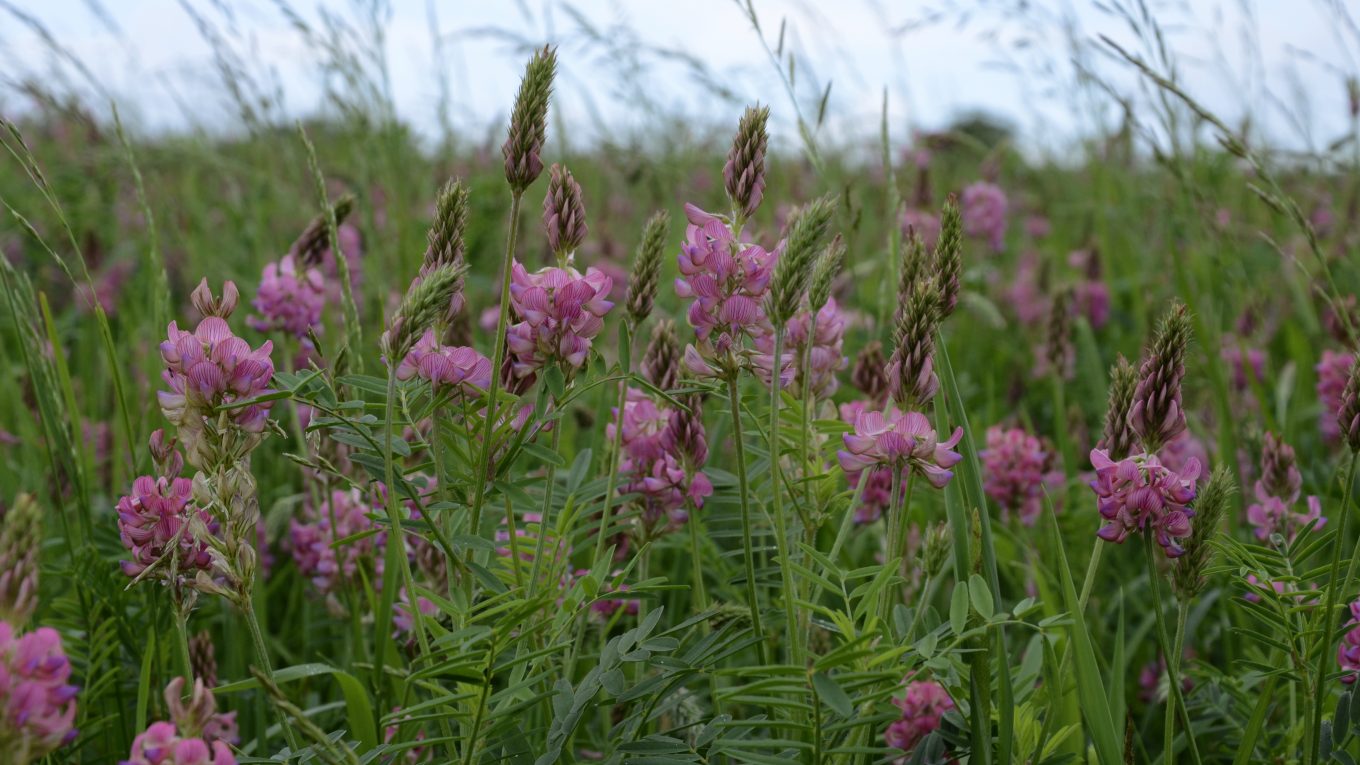Sainfoin
Holy hay or holy clover, sainfoin is a forgotten non-bloat legume with amazing properties and not surprisingly it’s making a bit of a come back. I went to the Cotswolds to learn about sainfoin at an event hosted by Cotswold Seeds and Honeydale Farm.


Sainfoin (Onobrychis viciifolia) is a perennial legume that thrives on thin chalk, limestone or stony soils typical of the South Downs and the Cotswolds. Its an attractive plant, produces large spikes of pink flowers in early summer that are a magnet to insects. Known as holy hay, it has long been known for its many attributes. During the day we heard from several speakers about their experiences growing sainfoin and the results of the 4-year Healthy Hay project funded by the EU. There are so many benefits to this crop and here are the main ones:
- Natural wormer – sainfoin provides effective worm control when fed to livestock as it disrupts the worm’s life cycle.
- Protein source – sainfoin contains condensed tannins which bind to proteins and protects them as they pass through the rumen, allowing them to be digested and absorbed, something that does not happen with other legumes. This gives rapid liveweight gain, so young stock can be finished sooner with a good carcass grade. The presence of the tannins means that sainfoin, despite having a lower N content than lucerne, has a high nutritive value. Also, the condensed tannins reduce enteric production of greenhouse gases, such as methane.
- Bloat-free – sainfoin, unlike other legumes, does not cause bloat due to the presence of the tannins, and research has found that as little as 20% sainfoin in the diet can reduce the risk of bloat to virtually zero.
- Soil nutrients – sainfoin is a nitrogen fixer, so Rhizobia in root nodules of sainfoin fix nitrogen and boost soil nitrogen. The roots penetrate to great depths and pull nutrients up from the subsoil. Sainfoin has been found to increase the sequestration of nutrients such as phosphate. It is the ideal crop to sow ahead of cereals or brassicas in the rotation.
- Drought resistance – it can be grown on thin, highly alkaline soils and is extremely tolerant of drought due to its deep rooting nature, growing through dry periods. It is ideally suited to stony brash and chalk, but does not thrive on heavy wet soils with a pH below 6.2
- Wildlife value – with its extended flowering period and the fact that sainfoin produces more honey than any other legume makes it invaluable to pollinators, attracting a wide range of bumble and honey bees, butterflies and many other invertebrates. Bees feeding on sainfon produce higher yields of honey.
Sainfoin has so much going for it, so I’m surprised more farmers don’t grow this attractive forage crop. The expertise is there now, so there is no excuse not to grow it.




